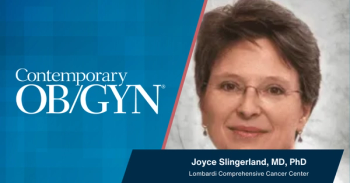
- Vol 64 No 11
- Volume 64
- Issue 11
Early menopause and risk of CVD
A new study, which found that women with premature and early menopause were at increased risk of having a non-fatal cardiovascular disease event before age 60, has consequential public health and clinical implications.
An Australian
“The doubling of cardiovascular disease risk in women below the age of 60 years who have premature menopause is concerning and indicates an urgent need to raise awareness of cardiovascular disease risk in younger women,” commented two English health professionals not involved in the study: Lizelle Bernhardt, RN, CLAHRC-EM, a PhD student and heart failure specialist nurse in the
With up to 10% of women experiencing early natural menopause, this population represents a potential target for early and tailored risk stratification.
Bernhardt and Dr. Lawson, whose comments appeared in the same publication, said a common misconception among health professionals and the general public is that cardiovascular disease mostly affects men, at least until older age. The two writers noted that such sex-bias about CVD needs to be confronted, “with emphasis on the increasing risk in younger women, in addition to new sex-specific preventative and therapeutic strategies for reducing and managing cardiovascular disease in women.”
Currently, though, sex-specific risk factors are lacking in cardiovascular disease risk algorithms like QRISK and the Framingham Risk Score, which focus on traditional cardiovascular disease risk factors.
The study pooled data from 15 observational studies conducted in five countries and regions (Australia, Scandinavia, USA, Japan and UK) between 1946 and 2013. The primary endpoint was the occurrence of first non-fatal CVD, which was defined as a composite outcome of incident coronary heart disease (CHD) or stroke.
Of the 301,438 women analyzed, 4.3% had a first non-fatal CVD event after menopause – primarily coronary heart disease.
Compared with women who had menopause at age 50 or 51, women under age 40 with premature menopause had the highest risk of CVD: hazard ratio (HR) 1.55; 95% confidence interval (CI): 1.38 to 1.73 (P < 0.0001). The study concluded that early menopausal women who smoked, were underweight or obese, and those with lower socioeconomic status were more likely to develop CVD.
“These findings add to previous evidence showing increased influence of some traditional cardiovascular disease risk factors in women compared with men and further emphasizes the need for risk stratification by sex,” the comment writers stated. Furthermore, additional research is needed to determine whether the connection between early or premature menopause and the frequency of cardiovascular disease differs by ethnicity.
Meanwhile, research by the study authors “is timely and underpins the importance of precision medicine across the cardiovascular disease life course,” the comment writers noted.
The differences in CVD pathogenesis between men and women stem from both genetic and biological mechanisms, explained the writers, as well as from complex interactions between behavioral and socioeconomic factors. Studies that further illuminate the complex associations between sex and CVD risk are needed to redesign primary and secondary prevention guidelines.
The writers also said there must be a shift away from a one-size-fits-all approach to a more patient-centered strategy to alleviate the increasing global burden of CVD.
Articles in this issue
about 6 years ago
Endometriosis for the generalistabout 6 years ago
When is it time for the ob/gyn to assume care?about 6 years ago
Reproductive health care in America: A story of give and takeabout 6 years ago
Uterine allografts: A new era in reproductionabout 6 years ago
Preterm birth phenotypes in women with autoimmune diseaseabout 6 years ago
STDs on increase in CDC reportabout 6 years ago
Sexual minority women and contraceptive useNewsletter
Get the latest clinical updates, case studies, and expert commentary in obstetric and gynecologic care. Sign up now to stay informed.




